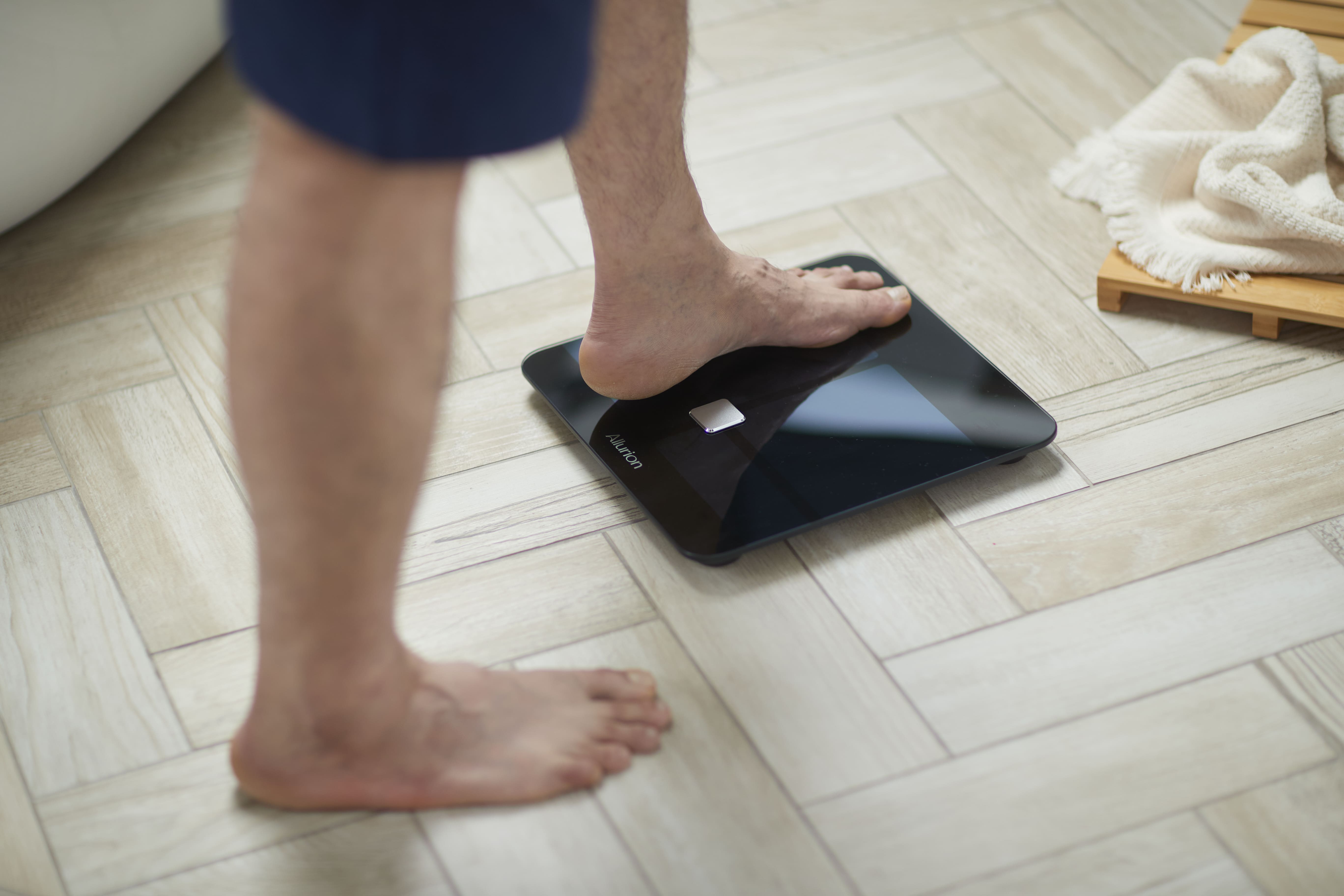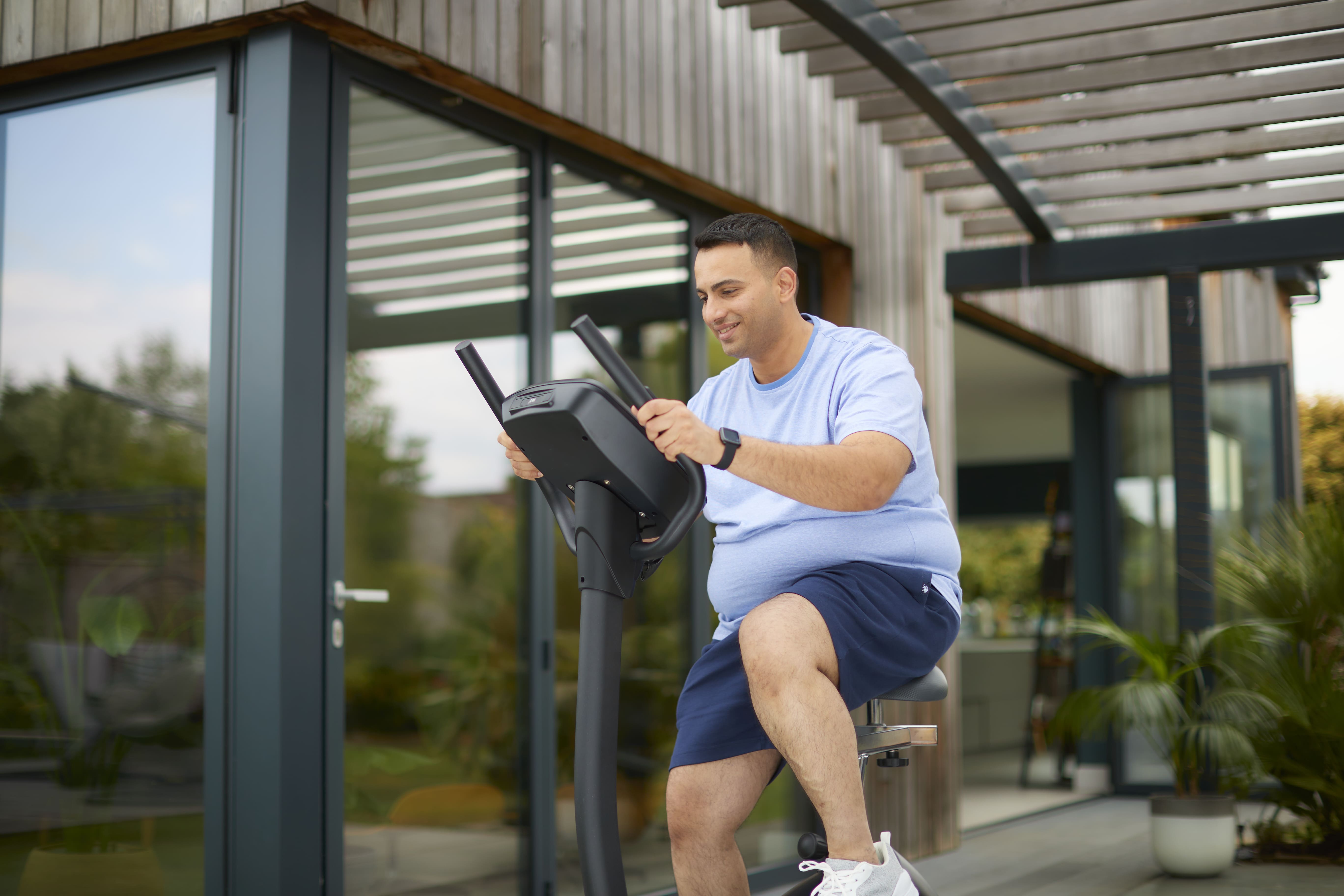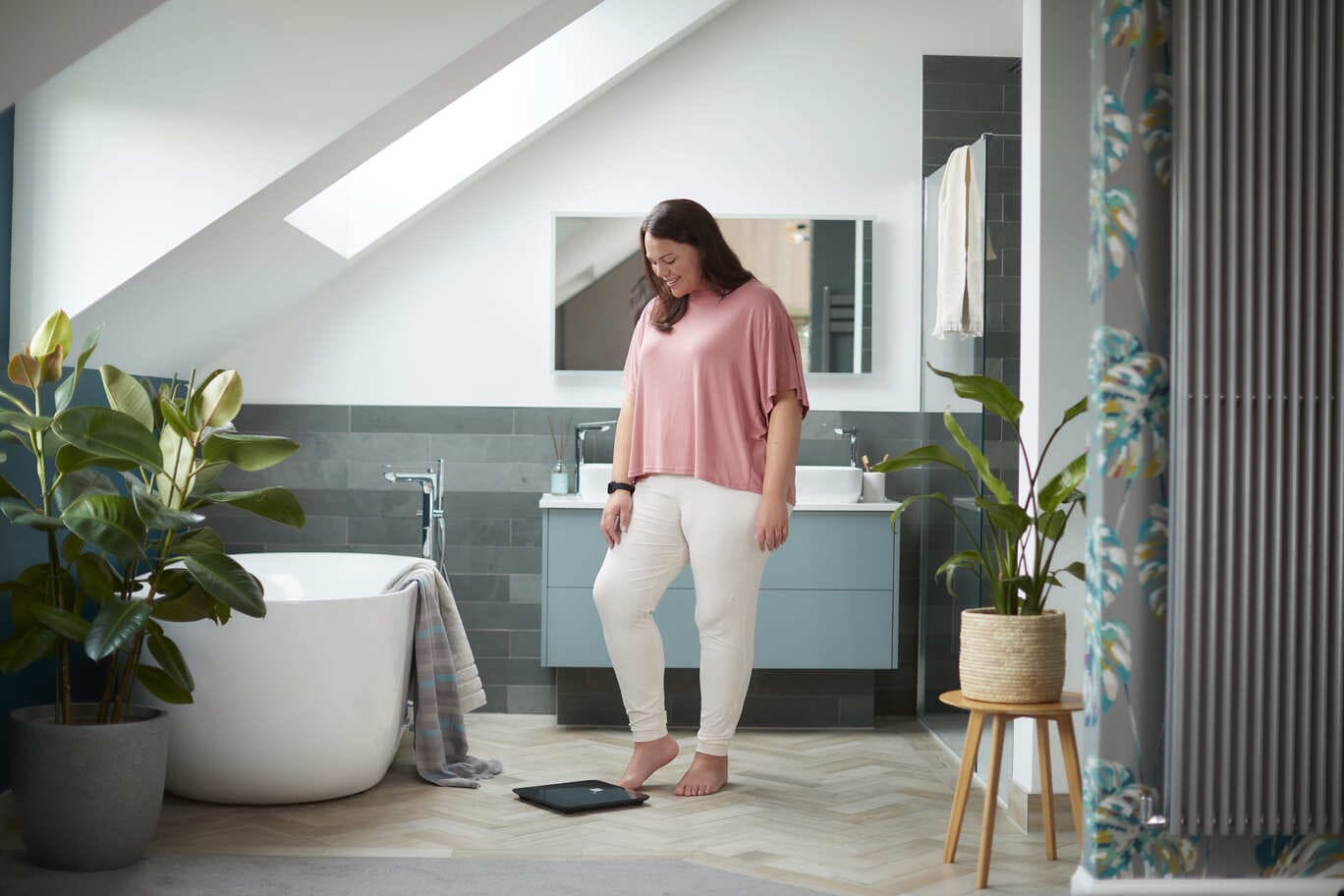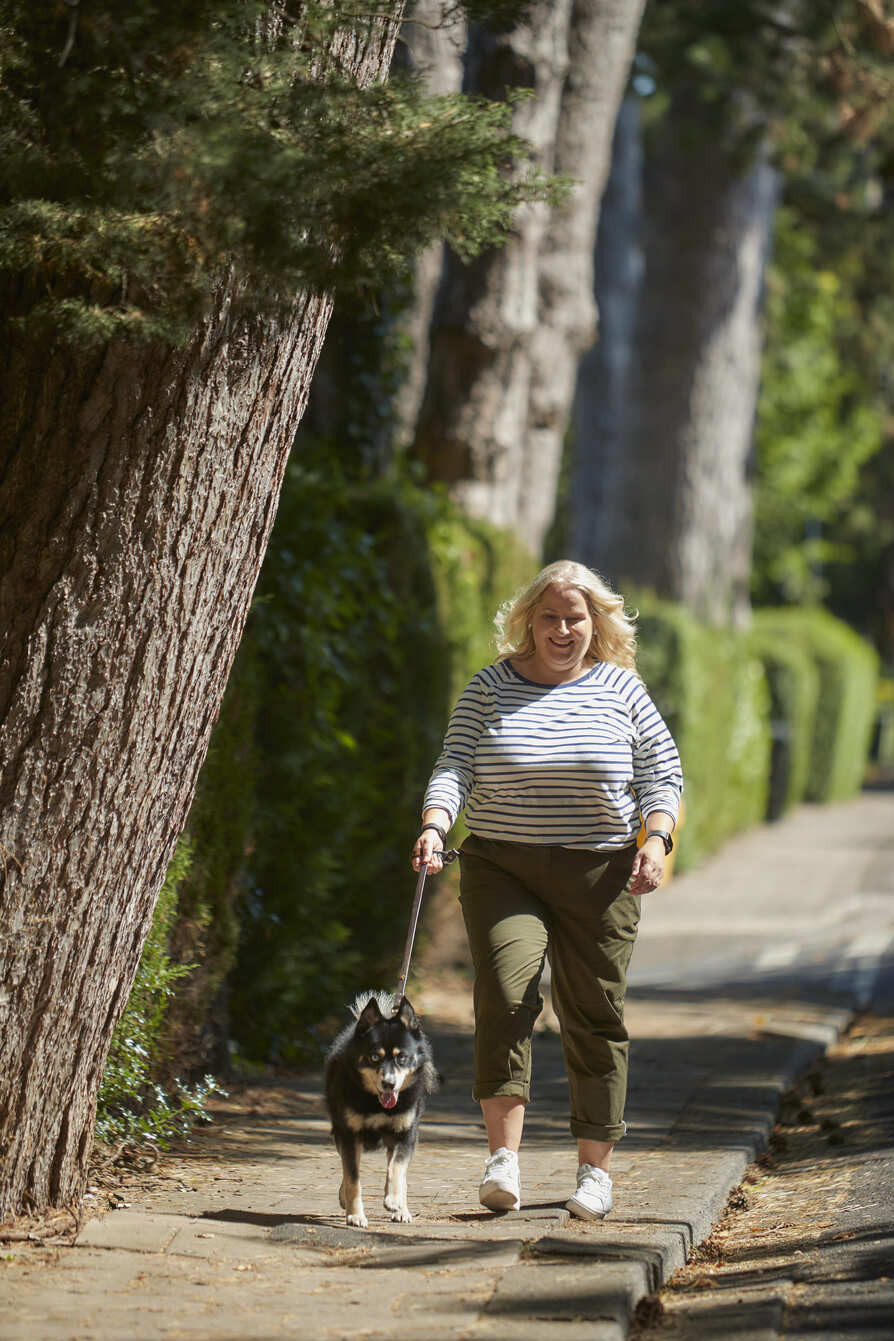How the Allurion Program can help with diabetes

The fight against the impact of diabetes is now a major health challenge worldwide. More than half a billion people are living with this condition every day – or 1 in 10 adults.1
But it doesn’t have to be this way. World Diabetes Day – held on November 14 each year – is an ideal time to look at how weight management can help reduce the risk of type 2 diabetes.
So what is diabetes? It’s a chronic disease that occurs when your body either can’t produce enough insulin or can’t effectively use the insulin it does produce. It can lead to a range of health complications, including heart or kidney disease, nerve damage and vision problems.
There are two types of diabetes: type 1 diabetes and type 2 diabetes. We’ll talk about both in more detail below, but it’s mostly type 2 diabetes that we’ll be discussing in this post.
That’s because there’s a direct relationship between type 2 diabetes and weight. Just a relatively small amount of weight loss for people who are living with overweight, or obesity can have a big impact on health, including managing type 2 diabetes.

In fact, if you are affected by overweight or obesity, losing just 5% of your total body weight can reduce the risk of a diagnosis of type 2 diabetes. If you’re already living with type 2 diabetes, it can help improve blood sugar control and general health.
And that’s where the Allurion Program comes in. First, though, let’s look at diabetes in more detail.
What is the difference between type 1 and type 2 diabetes?
Type 1 diabetes and type 2 diabetes have similar symptoms and, over time, they can lead to many of the same complications. They can result in uncontrolled blood sugar levels, which can lead to both short- and long-term health problems. However, they are very different diseases.
Type 1 diabetes is an autoimmune disease that occurs when your body can’t produce enough insulin (a hormone) to regulate the sugar levels in your blood stream and cells. It can lead to abnormal increases in your glucose (sugar) levels. Type 1 diabetes is not related to lifestyle or diet.
With type 2 diabetes, your body can produce insulin but your body doesn’t respond to it in the normal way. Around 9 in 10 of people living with diabetes have type 2 diabetes.
We’re going to talk about type 2 diabetes in more detail because, unlike type 1 diabetes, type 2 diabetes can be prevented.
Why is talking about type 2 diabetes so important?
More people than ever before are living with type 2 diabetes – around 5 million in the UK alone, 37 million in the US,2 and approximately 60 million in Europe.3 Almost 14 million in the UK have prediabetes and are at high risk of continuing on the path to type 2 diabetes.
That’s a heavy burden for not only individuals and their families but also for healthcare services worldwide. When you consider that diabetes can lead to heart and kidney problems, amputations, sight loss and premature death, the long-term implications are obvious.
How do you prevent type 2 diabetes?
Type 2 diabetes is often called a ‘silent’ condition because it can develop over many years in response to diet or lifestyle behaviours. Some people may not know they have type 2 diabetes until they develop symptoms of a complication.
Many factors contribute to the risk of developing type 2 diabetes – some you can control and some you can’t. There are certain lifestyle changes you can make to prevent or delay the onset of type 2 diabetes.
What can reduce your risk of type 2 diabetes?
1. What you eat. The best kind of diet to help prevent type 2 diabetes is a healthy, well-varied one, rich in fruits, vegetables, lean proteins, wholegrain carbs and healthy fats.

2. What you do. Try to do at least 150 minutes of moderate-intensity activity every week. That’s about 30 minutes of exercise per day, 5 days a week. Walking to work, cycling, gardening, gym workouts, swimming, tennis … it doesn’t matter how you stay active – the main thing is that you do.

3. What you weigh. Aiming to reach and maintain a healthier weight is a powerful way to reduce the risk of developing type 2 diabetes. In fact, recent guidelines from the American Diabetes Association and the European Association for the Study of Diabetes include weight management as a primary treatment for type 2 diabetes.4

Can weight loss reverse type 2 diabetes?
The importance of weight management in type 2 diabetes cannot be overstated. Weight management is thought to be one of the most important things many people living with obesity and type 2 diabetes can do.
Reaching a healthier weight is one of the key steps now recommended for people needing to control type 2 diabetes or to reduce their chances of developing it.4
Losing just 5% of total body weight can start to have an impact on managing prediabetes and type 2 diabetes risk. A weight loss of 7% can mean the difference between developing type 2 diabetes and not. For people who are on the cusp of developing type 2 diabetes, a 7-8% weight loss can pull them back from the brink.
For people who already have type 2 diabetes, weight loss and remission are closely linked. We’ll discuss this in more detail below.
What is prediabetes and how do you reverse it?
If you have prediabetes, it means you’re at high risk of developing type 2 diabetes in the next few years.
Prediabetes is when your blood sugar levels are higher than normal, but not yet high enough for you to be diagnosed with type 2 diabetes.
Even so, you may already be developing some of the longer-term problems that type 2 diabetes can cause. For example, damage to your blood vessels, heart or kidneys.
It’s possible to prevent or reverse prediabetes by making the same lifestyle changes needed to help reduce your risk of type 2 diabetes (see above).

The Allurion Program can help treat type 2 diabetes and prediabetes
We already knew that the Allurion Program was more effective than dieting alone in helping people to reach a healthier weight.
Now, the Allurion Program has also been clinically proven to treat people who are living with type 2 diabetes and prediabetes. It can bring them into disease remission, which means their blood sugar levels come back to below the diabetes range.6
That means the Allurion Program – based on a state-of-the-art gastric balloon pill, 6 months of nutritional coaching and digital support tools – can be used to help manage type 2 diabetes and prediabetes.

This ground-breaking data has been peer-reviewed and published. It was also presented at The Obesity Society (TOS) Obesity Week 2021.
What were the main results from the clinical study?
The study included 226 patients who followed the Allurion Program to achieve a healthier weight.
On average, patients in the study had lost 17.7kg (or 16.2% of their total initial body weight) after 4 months on the Allurion Program.
All patients in the trial had been diagnosed as having type 2 diabetes or prediabetes prior to the study. That means that they had unhealthy levels of HbA1c. HbA1c – or haemoglobin A1C – is a measure of blood sugar control. The lower the number, the better.
The people in the trial who had type 2 diabetes saw their HbA1c levels improve from 7.0±0.6% to 5.5±1.1%. Those living with pre-diabetes saw their HbA1c levels improve from 6.0±0.2% to 4.9±0.7%.
These significant HbA1c reductions meant that people in both groups were in complete disease remission by the end of the clinical trial – so after just 4 months. Their HBA1c levels had gone down to a normal range found in people who don’t have type 2 diabetes.
How does this compare with bariatric surgery?
Studies following bariatric surgical procedures have shown that a weight loss of around 15kg can lead to remission of type 2 diabetes in most people who are also living with obesity. The chances of remission get better the sooner a person loses weight after their diabetes diagnosis.
The new Allurion Program data builds on these studies, demonstrating that lifestyle changes alongside the Allurion Balloon can deliver significant weight loss and health benefits. In fact, for people who cannot or do not want to do bariatric surgery, the placement of two sequential Allurion gastric balloons over 1 year can deliver up to 22.8% of total body weight loss — results that approximate those of bariatric surgery.7
But it’s important to note that maintaining healthy lifestyle changes and weight loss is key to controlling type 2 diabetes over the long term.
And that brings us to one of the benefits of the Allurion Program: our lifestyle change program that works alongside the Allurion Balloon can give you the knowledge and tools to maintain your weight loss. In fact, up to 95% of the weight lost on the program can be maintained one year down the line.8

Gastric band or balloon – which is more extreme?
The Allurion Balloon is placed during a 15-minute consultation with a doctor. It’s an easy-to-swallow gastric balloon pill – it does not require anesthesia, endoscopy or surgery for either placement or removal.

In this regard, the Allurion Balloon is a procedureless alternative to the weight-loss surgery that’s necessary for a gastric band or gastric bypass.
The Allurion Balloon is a temporary treatment that can be used as an early intervention or by people who do not want – or cannot have – surgery.
Bariatric surgery to reduce the size of the stomach can be effective, but anesthesia can be risky for people living with obesity. Surgery also requires a lengthy preparation, while it can also be expensive and involve long waiting lists in some countries.
The Allurion Balloon removes these barriers, helping to manage type 2 diabetes in people who have found it difficult to achieve significant weight loss with diet and exercise alone.
How can I find a gastric balloon near me?
The first step is to use our BMI calculator to see if you’re eligible for an Allurion Balloon.
Then it’s a simple matter of getting in touch with your nearest Allurion clinic.
If you have any questions, or if you’d like to speak with an Allurion advisor, you can get in touch here.
Get more information about the Allurion Program online at Allurion.com.
To find out if you are at risk of diabetes, go to Diabetes UK and complete their quick risk quiz.
References
-
IDF Diabetes Atlas | Tenth Edition. Diabetesatlas.org. Published 2022. Accessed October 10, 2022.
-
https://www.who.int/europe/news-room/fact-sheets/item/diabetes
-
Davies, M, Aroda, V, Collins, et al. Management of Hyperglycemia in Type 2 Diabetes, 2022. A Consensus Report by the American Diabetes Association (ADA) and the European Association for the Study of Diabetes (EASD). Diabetes Care. doi: 10.2337/dci22-0034
-
Vantanasiri et al. Obes Surg 2020, Apr. 30, pgs 3341–3346 The Efficacy and Safety of a Procedureless Gastric Balloon for Weight Loss: a Systematic Review and Meta-Analysis
-
Ienca R, Rosa M, Pagan Pomar AA, Hansoulle J, and Caballero A. Emerging Role of the New Swallowable Gastric Balloon in Type 2 Diabetes and Prediabetes Treatment. Poster 114. Presented at TOS Obesity Week 2021.
-
Ienca et al. Sequential Allurion Balloon Treatment 1- Year Weight Loss Results Approximate Bariatric Surgery Results, TOS Obesity Week, 2020
-
Ienca R, Giardiello C, Badiuddin F, et al. Long-Term Efficacy of the Elipse Gastric Balloon System: An International Multicenter Study. Oral Presentation. Presented at TOS Obesity Week 2020.
-
National Diabetes Statistics Report, 2017.Centers for Disease Control and Prevention website. https://www.cdc.gov/diabetes/data/statistics/statistics-report.html External link. Updated July 17, 2017. Accessed October 25, 2017
-
Wing RR, Lang W, Wadden TA, et al. Benefits of modest weight loss in improving cardiovascular risk factors in overweight and obese individuals with type 2 diabetes. Diabetes Care. 2011;34(7):1481-1486. doi:10.2337/dc10-2415
-
Ryan DH, Yockey SR. Weight Loss and Improvement in Comorbidity: Differences at 5%, 10%, 15%, and Over. Curr Obes Rep. 2017;6(2):187-194. doi:10.1007/s13679-017-0262-y
-
Magkos F, Hjorth MF, Astrup A. Diet and exercise in the prevention and treatment of type 2 diabetes mellitus. Nat Rev Endocrinol. 2020;16(10):545-555. doi:10.1038/s41574-020-0381-5
-
Anderson JW, Kendall CW, Jenkins DJ. Importance of weight management in type 2 diabetes: review with meta-analysis of clinical studies. J Am Coll Nutr. 2003;22(5):331-339. doi:10.1080/07315724.2003.10719316
-
Yuen M., Earle R., Kadambi N., et al. A systematic review and evaluation of current evidence reveals 195 Obesity-Associated Disorders (OBAD). The Obesity Society 2016 abstract book 2016:92
